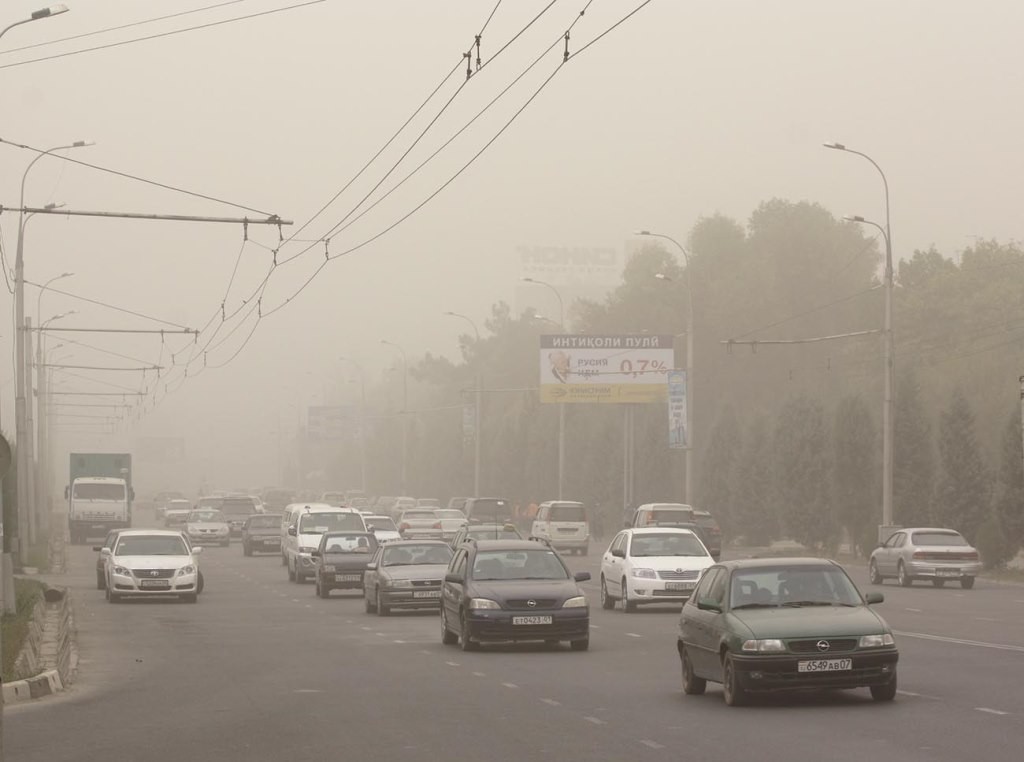Dust storms surge in Tajikistan
According to data from the country's Hydrometeorological Agency, the phenomenon has increased more than tenfold in the last thirty years as a result of climate change and intensive access to water sources. The dust worsens air quality and accelerates glacier melt. Urgent measures are needed, such as those taken by Kazakhstan and Uzbekistan, which are planting a million shrubs at the bottom of the Aral Sea.
Dushanbe (AsiaNews) - In the last 30 years, dust storms in Tajikistan have increased more than tenfold, according to the country's Hydrometeorological Agency, and in recent days there has been a further increase in air pollution in the cities and provinces of Khatlon, Sogda and Dushanbe, as well as in other areas, with dust concentrations reaching exponential levels.
The three key words for the tasks to be carried out are reiterated in every way: prevention, preparation and prediction.
Dust and sand storms are widespread meteorological events in the arid and semi-arid regions of our planet, depending on three fundamental factors: strong winds, absence of vegetation and long periods of low rainfall.
Dust transport is a natural process and an important element of the Earth's biochemical cycles, and in the last century it has increased by more than 25% due to a combination of non-continuous land use, intensive access to water sources and climate change.
Dust storms are more frequent, more intense and more widespread geographically, causing serious damage to various sectors of the economy, human health and the integrity of the surrounding environment.
In Central Asia, periods without rain are becoming longer, with extensive sandy and clayey desert areas, very sparse vegetation and strong winds affecting some areas for years at a time.
According to UN data, over 80% of the population of Turkmenistan, Pakistan, Uzbekistan, Tajikistan and Iran is exposed to the more or less serious consequences of poor air quality due to these phenomena.
The latest report on “Situation analysis: dust and sand storms in Central Asia” highlighted that in Tajikistan, over the last thirty years, the amount of dust has increased more than tenfold; while in the early 1990s there were two or three of these dangerous events per year, in recent years there have been more than 35 per year.
Dust storms vary greatly in intensity, ranging from localised events to storms covering thousands of kilometres across several countries in Central and South Asia. In Tajikistan, they often occur near the deltas of the Vakš and Kafiringan rivers, while several areas of the country suffer from dust that rises from the bottom of the Aral Sea or is carried by winds from Afghanistan, sometimes from the Middle East and Africa.
This does not necessarily cause direct damage to buildings, but the consequences can still be devastating, especially for agriculture, with reduced harvests, livestock deaths and loss of fertile soil. Air quality deteriorates, air and land transport are disrupted, and the efficiency of solar energy production is reduced.
Severe dust storms can also damage electrical components and mechanical parts in many structures, causing disruption to many functions. The deposition of fine dust particles on glaciers accelerates their melting, a fact that is causing great concern among specialists and scholars in Tajikistan, where a trend towards a reduction in the area and mass of glacial cover has been observed for some time as a consequence of global warming.
It is becoming increasingly necessary to constantly monitor the intensity of dust storms, not only in the areas where they occur most frequently, but also thousands of kilometres from their point of origin, in order to assess all the necessary preventive measures to be taken, seeking to combat the causes or minimise the consequences, and restoring natural ecosystems in the most arid lands.
Kazakhstan and Uzbekistan are continuing their work to restore vegetation at the bottom of the Aral Sea, and more than 1 million hectares of Haloxylon shrubs are expected to be planted by 2025. Tajikistan is also being called upon to take more decisive action.







.png)










